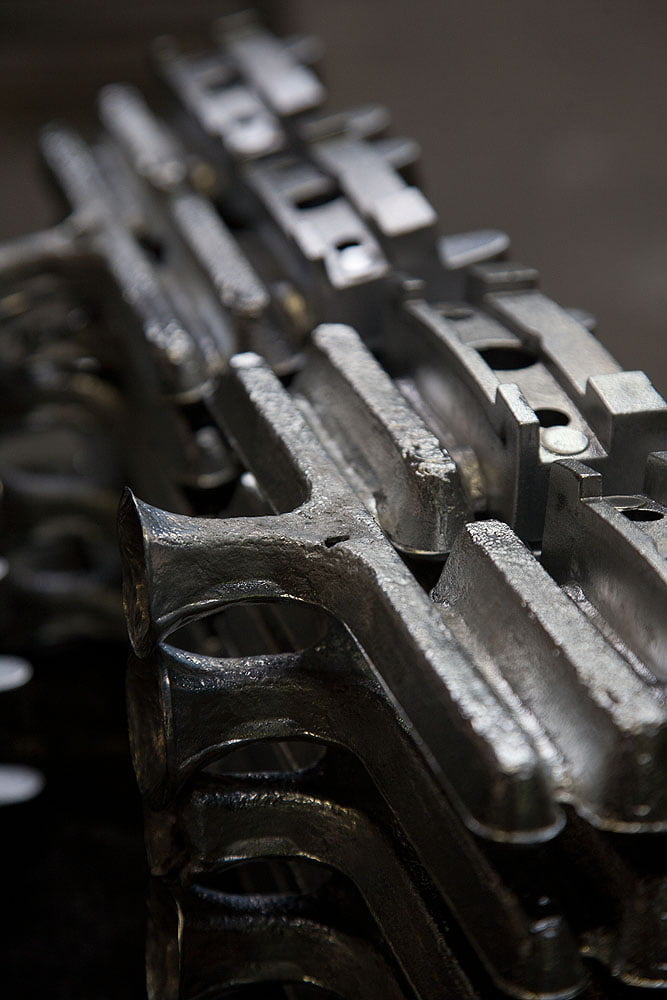Published - 22nd Feb 2018

In this blog, we’ll be looking at some key facts about gravity-die casting – otherwise known as permanent moulding or chill casting. This process is used to create intricately-shaped components for industrial applications in the defence, medical, energy and other sectors.
In gravity-die casting, we use dies manufactured predominantly from cast iron. The die features at least two sections, with one part being fixed and one part being moveable. On some projects, steel pins are added to help with ejection of the casting at the end of the process.
The two halves of the die are heated and sprayed with an insulation and a lubricant coating before being clamped together. These coatings help to lubricate the moving parts and reduce wear on the dies.
Core inserts, manufactured from either metal or sand, can then be inserted in the die to create internal features. Once this has been completed, the molten metal can be poured into the die cavity.
As the name suggests, the die cavity fills with the force of gravity alone. Unlike high-pressure die casting, no additional pressure is applied.
The dies used in gravity-die casting can last for many years. Although the initial capital cost is high, the dies are cost effective for large production runs and repeat orders.
The dies are manufactured for Haworth Castings by a specialist external die maker.
In common with other casting methods, die cast parts can be subject to several defects – such as misruns, inclusions and cold shuts. So, our foundry team needs to manage this process with the utmost skill and care. However, they do not have to worry about sand burn in die casting – which can be an issue in sand casting.
The molten metal chills much more quickly using gravity-die casting rather than sand casting[1]. This is because heat dissipates more rapidly in the dies than the sand moulds, due to the relative densities of the different materials.
Due to this rapid solidification, many hundreds of castings can be produced each day. This high speed of production offers an advantage over sand casting.
Gravity-die casting is ideal for producing small metal parts. One of our more unusual projects has involved manufacturing castings for torque wrench components.
Historically, gravity-die casting has been known to produce a higher quality product than sand casting. However, with the advent of new sand bonding methods and improved techniques, these two processes are now more on a par in terms of the complexity of the finished products.
Gravity-die casting is still used on some specialist, high-volume projects at Haworth Castings. We advise our customers on which technique would be most suited to their needs – giving them the highest quality products, at the best cost.
For further details about our casting capabilities, please call us today on +44 (0)1794 512685 or email us: sales@haworthcastings.co.uk
[1] in a similar-sized component
If you have a project, talk to our experienced sales team
Contact us